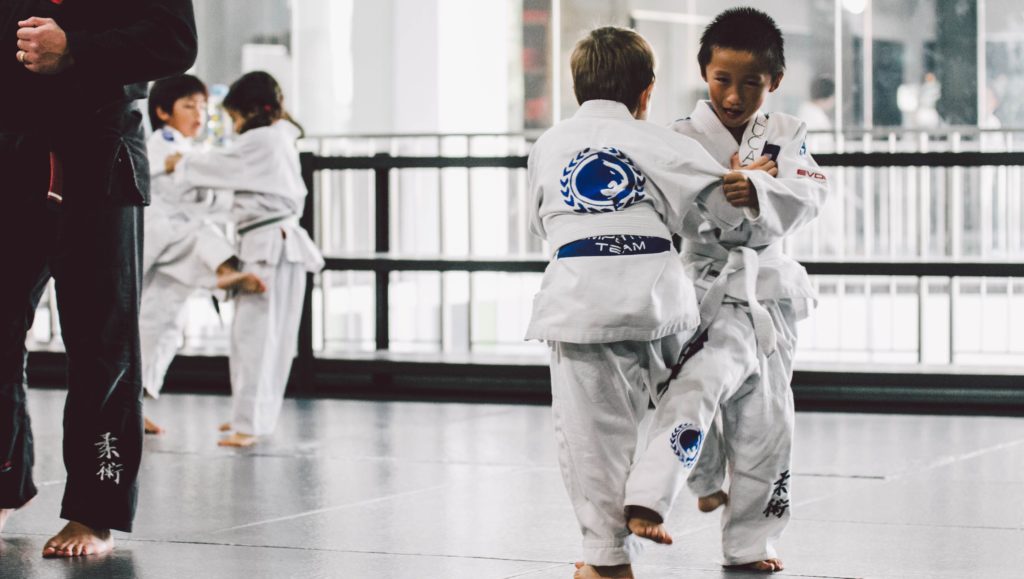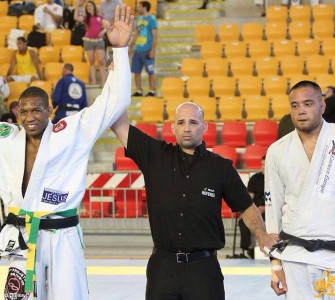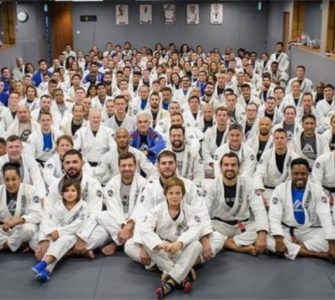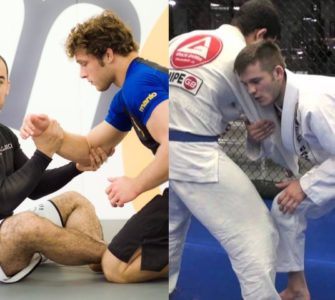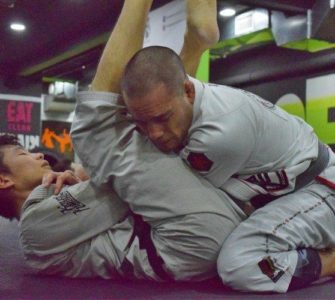If your academy is like many others, the children Jiu-Jitsu curriculum has different belts and roughly follows the IBJJF guidelines for these belts. Belts are awarded when the student display’s a certain level of competency and the instructor deems the student ready to wear the new belt. This is pretty standard across most Jiu-Jitsu academies. Unfortunately belt tests are often scoffed at and are underutilized. Belt testing offers a huge advantage, to the student and the instructor. After reading this article please consider adding belt testing for children to your academy, you’ll be surprised at the results.
Set & Achieve Goals
This is a great opportunity for young minds to learn how to accomplish a goal. Today, kids are not usually taught the big picture, simply to do. Belt promotions allow them the opportunity to see that goals consist of smaller, more specific goals. These belt tests, below, were developed using the SMART criteria.
Specific – Children are given a list of specific techniques needed for promotion. Because of the limited number of techniques and high standards in place, the students will be more focused on details and will strive for perfection in every technique.
Measurable – Technique performance and understanding will be evident on test day.
Achievable – All tasks are achievable by children. Body strength and dexterity were taken into consideration during the development of this curriculum. For example, young children (6 year old new student) are unable to realistically perform moves involving strong grips (cross choke) so those techniques are required later in the curriculum.
Relevant – Fundamental moves are taught earlier and broaden out as the child becomes more proficient. Fundamentals are just that, essential techniques of central importance that are high percentage, high reward techniques that work for adults and children.
Time Bound – For this to be successful, the instructor must conduct testing as scheduled. Testing must be announced, repeated, and performed on a schedule.
Test Stress
Would you believe it, in today’s K-12 schools some tests are not given because it causes the kids excess stress? Because of this, adults of tomorrow will have failed to develop a positive coping mechanism to deal with stressful situations. With the introduction of belt tests children will be tested under the watchful eye of a competent instructor. In this stressful situation students will have to compose themselves and manage their nerves and jitters while demonstrating their Jiu-Jitsu knowledge. Managing stress while accomplishing a task is a life skill that will help them off the mat and towards a successful future.
Recognition
The belt means many things, among them it is an external device to recognize competency. Belts help set a hierarchy in the dojo and children strive for advancement. They will work hard to get “ahead of the line” and not be left behind with new students and non-performers. Belts also prevent the awkward situation where a competent “white belt” student is able to compete in the yellow belt division, while inappropriately wearing a white belt. Children should not be put in this situation and should be properly recognized. Additionally, the children will feel belonging in the dojo family with the recognition by the head instructor.
Tying it all together
Simply because the student can perform the techniques doesn’t mean they will receive an invitation to test. In addition, all tests should include selected techniques from previous tests as chosen by the head instructor. You’ll want to make sure they didn’t forget anything from previous tests, remind them they’re being taught fundamentals, building blocks to a higher level of Jiu-Jitsu. Finally, testing is as much for the children as it is for the instructor. You get to assess how well you are presenting the material with how well the children present it to you.
Belt testing doesn’t prevent an instructor from awarding a belt to a truly deserving student. If a student performs in an exceptionally meritoriously way, the head instructor has discretion to promote on the spot without the student testing for the next belt.
Think about the pictures and marketing of promotions for the school. You’d be surprised at the looks on the kids’ faces and emotions with a belt promotion, let alone a piece of tape.
It may bear repeating to the students, but simply because the student is higher ranked than others, it does not mean they will always defeat a lower belt. It simply means they have demonstrated more Jiu-Jitsu knowledge than the lower belt.
The following curriculum is for a sport Jiu-Jitsu oriented school and is designed for a new student who starts at five years old.
Brazilian Jiu-Jitsu Curriculum for Children
The following techniques will be performed by a White belt testing to Grey and White belt:
– Three different belt ties
– Shrimp, Reverse shrimp, Gorilla, Alligator, Crab, Bear, Butt scoot, Reverse butt scoot
– Breakfall with technical stand-up – Back, Side, Forward
– Roll – Forward, Forward with stop, Backward, Side
– Position recognition (Rear mount, mount, side control, guard, half-guard)
– Arm bar drill
– Rear naked choke
– 1x Guard pass – From closed guard
– Scissor Sweep – Standard
– Hip Bump Sweep
– Takedown – Must be from a shot
– Takedown defense – Sprawl and crossface
– Escape/reguard when mounted – Any technique
– Escape/reguard from side control – Any technique
– Escape rear mount – Any technique
The following techniques will be performed by a Grey and White belt testing to Grey belt:
– Arm bar technique
– Americana – From mount
– Toreando pass
– “Y” Guard Sweep
– Rear naked choke defense
The following techniques will be performed by a Grey belt testing to Grey and Black belt:
– 2x Takedowns – 1 must be from a shot
– Americana – From side control
– Half guard pass – Knee cut
– Flower sweep
– Arm bar escape – On back
The following techniques will be performed by a Grey and Black belt testing to Yellow and White belt:
– 2x Takedown defense – Against turning throw; sprawl & crossface
– Dustin Denes triangle – From closed guard
– 2x Guard pass – From closed guard
– Scissor sweep – Kickstand
– Knee on belly – Position and pressure submission
The following techniques will be performed by a Yellow and White belt testing to Yellow belt:
– Jump over series
– Kimura – From closed guard
– Half guard sweep
– Replace guard from knee on belly – Any technique
– Triangle escape
The following techniques will be performed by a Yellow belt testing to Yellow and Black belt:
– 3x Takedowns – Two must be from a shot
– Kimura – From side control
– Guard pull
– Back take – Gift wrap
– Turtle defense
The following techniques will be performed by a Yellow and Black belt testing to Orange and White belt:
– 3x Takedown defense – Sprawl and cross face, sprawl and quarter nelson, against turning
throw
– Arm bar – From guard
– 3x Guard pass – From closed guard
– Butterfly sweep
– Kimura defense
The following techniques will be performed by an Orange and White belt testing to Orange belt:
– Kezure Kesa Gatami System
– Cross choke – From guard
– Butterfly guard pass
– Technical mount – Chair sit back take
– Arm bar escape – From knees or standing
The following techniques will be performed by an Orange belt testing to Orange and Black belt:
– 4x Takedowns – Two must be from a shot
– Cross choke – From mount
– Double under pass
– Turtle roll over – Maki komi
– Cross choke defense
The following techniques will be performed by an Orange and Black belt testing to Green and White belt:
– 4x Takedown defense – 2x against shot; 2x against throw
– Collar choke – From rear mount
– 3x Guard pass – From closed guard
– Spider guard – Any sweep
– Collar drag – From seated guard
The following techniques will be performed by a Green and White belt testing to Green belt:
– Guard Pass Series
– Spider guard – Triangle
– Arm bar – From top turtle
– 2x Half guard sweep
– Arm drag
The following techniques will be performed by a Green belt testing to Green and Black belt:
– 5x Takedowns – Two must be from a shot
– Clock choke
– Uma plata – From closed guard
– Spider guard pass – Knee in
– De La Riva Guard – Position and any sweep
About the Author:
At the time of this writing the author, Ben Germano, trains at Tamp Florida Judo under Rhadi Fergeson. Ben previously trained at Capitao Jiu-Jitsu and MMA and he started his formal Jiu-Jitsu training at Figo’. He is a Purple Belt in Jiu-Jitsu and a Brown Belt in Judo. He can be reached at https://www.facebook.com/okitakokandojo/ or @okitakokandojo on IG. A version of this article first appeared on his Facebook page.

